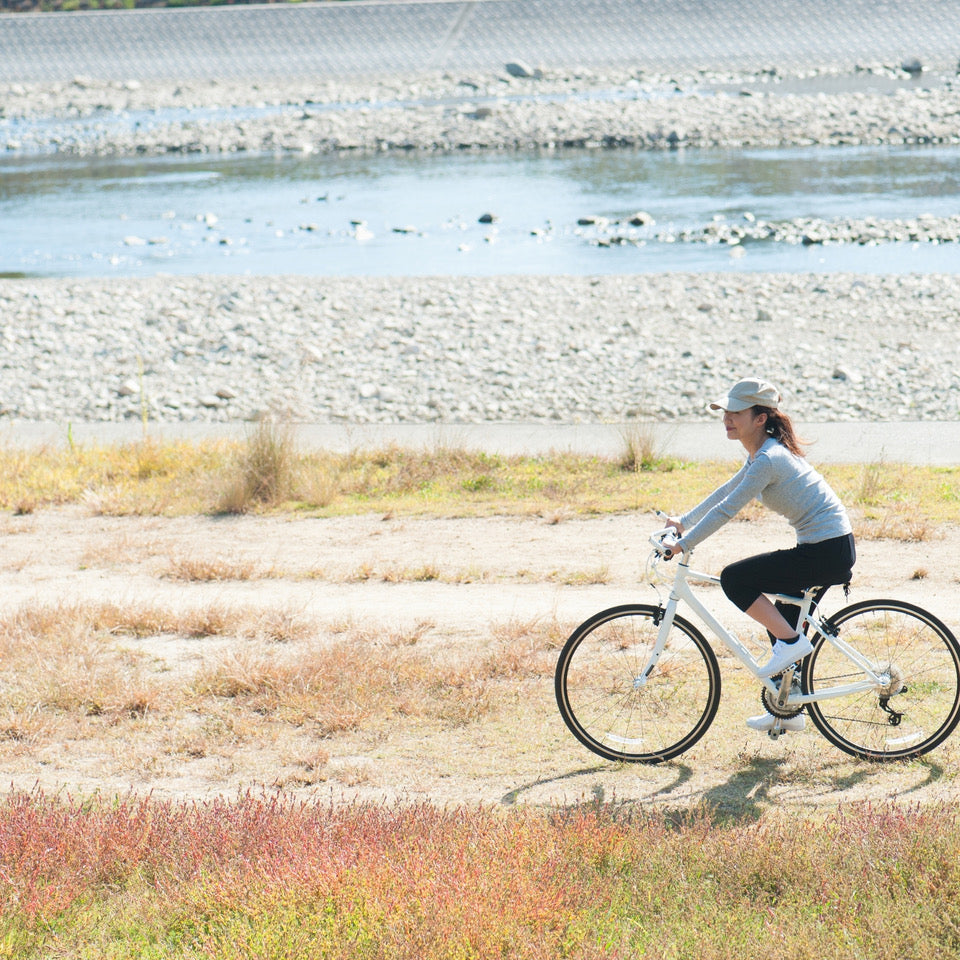Your Fitness Journey - Let's Go Shopping!
Oct 05 , 2021
Ok, so not exactly a physical activity, but you could power walk to the shops, move briskly around them and if you’re indecisive, you could end up clocking up your 10,000 steps before you stop for coffee!
By now I’m hoping that you’ve given something a go, possibly a few things, and have found the physical activity for you! You’re probably starting to realise there are a few bits and pieces you could be doing with to make your participation more comfortable and enjoyable. These are all just suggestions and recommendations based on my own experiences of what people need and find best. The main thing to remember is that you are an individual and if something I recommend here doesn’t suit you, then try something else.
Sports bras
These are essential for sporting activities, no matter how low impact. You need to protect your breasts from the bouncing that occurs during any activity, no matter how large or small they are. The breasts are supported by ligaments, not muscles, and once they stretch there is no natural way to tighten them again. As someone who runs, and is quite sizeable in the breast department, I have been wearing Shock Absorber bras for decades now. They are not cheap, so I always go to the Outlet section of their website where they have reduced price bras, often in quite garish colours! As I’m not wearing them on the outside so I don’t think that matters.
Shoes
I’m going to be uncharacteristically vague where shoes are concerned. Firstly, the choice of shoe depends to a certain extent to the activity you’re going to be doing. You don’t want to be wearing football shoes for marathon training. Secondly, there’s quite a bit of discussion about the advantages and disadvantages of wearing cushioned shoes for running. A good starting point is this article.
The main thing to consider is not to make any sudden drastic changes in your footwear. If you’re going for a different pair of shoes to what you have been using so far for your activity, phase the new pair in gradually over time.
Bikes
If you have recently learned to ride or taken up cycling as your activity you may have got to the point where you’re considering buying yourself a bike. The choice can be quite overwhelming, so focus first on a) your budget and b) what you’re going to use it for.
Having recently run a cycling project for learn to ride and wobbly wheelers, I have been very impressed with the hybrid bikes on offer at Decathlon. We used both the Riverside 500 hybrid (£329.99) and the Riverside 120 Hybrid (£229.99). The main difference between the two is that the more expensive 500 has disc brakes and front suspension.
A hybrid has features of a mountain bike (often front suspension, a less aero dynamic position when compared with a road bike, flat handlebars) mixed with a road bike (narrower and smoother tyres than a mountain bike). Whilst a road bike will go faster on the road, a hybrid will go faster than a mountain bike. A mountain bike will be better for technical off-road terrain, but a hybrid will manage some where a road bike wouldn’t.
Always try the bike out before buying and make sure it is comfortable for you. Bikes are often sized based on your height, but this can be misleading as some people have shorter legs than others of the same height.
If your cycling is more sport orientated, then there are specific bikes for different cycling disciplines (road, cyclocross, bmx, track, for example). These are beyond the remit of this article.
Helmet
This can also be a contentious issue, but I am a big believer in helmets to protect your head in the event you fall or are knocked off your bike. True, they are unlikely to save you in the event you are hit by a lorry. However, many accidents occur in a much more low-key fashion – a skid on some black ice, inadvertently clipping a curb, misjudging a corner, hitting an opening car door. Even professional cyclists fall off their bikes. Get a helmet, make sure you put it on properly and continue to pay attention when you are cycling.
Padding
People often find cycling uncomfortable on their nether regions. This can reduced by wearing cycling shorts, or cycling underwear (effectively cycling shorts but worn under something else) or a padded cover for the saddle itself. Sometimes it’s a matter of changing the saddle – there are a range of different shapes and sizes for saddles and some have holes where the main pressure points tend to be.
Books
Actually just one book which I’m always banging on about. Stretching by Bob and Jean Anderson. This book contains stretching routines to cover a wide range of sports (rodeo riding anyone?) as well as routines for every day living (watching the tv, sitting at your desk). Each stretch is fully described with illustrations to show where you should be feeling the stretch.
Clothing
So much choice! Think about how you’re going to be moving as part of your activity so that you choose clothes that won’t restrict this movement. Think about the weather you’re going to be exercising in – do you need a set of warm clothes, a waterproof jacket, waterproof trousers? Think about how much you might sweat and whether your clothing choice may just absorb that and become uncomfortable. Consider the seams and whether they might rub. Consider the environment – there are increasing numbers of companies producing sportswear that is more ethically and/or sustainably produced. Whatever you buy, look after it so that it will last.
Dawn is a British Triathlon level 3 coach and also qualified to coach cycling, teach swimming and is a YMCA level 3 Personal Trainer. Her aim is to help individuals and groups, whether novice, GB age group or somewhere between, to achieve their goals whilst remembering that for many athletes their training needs to be balanced alongside a full time job and family responsibilities.


